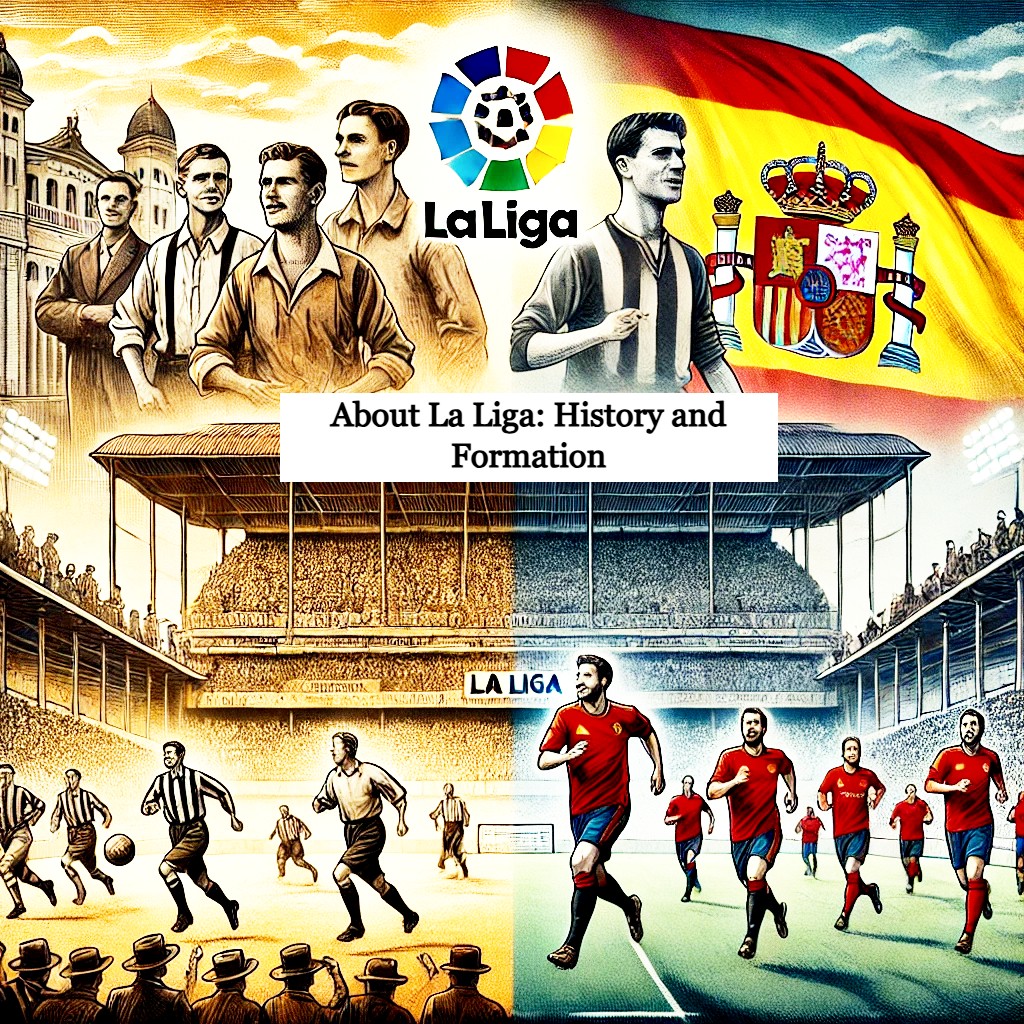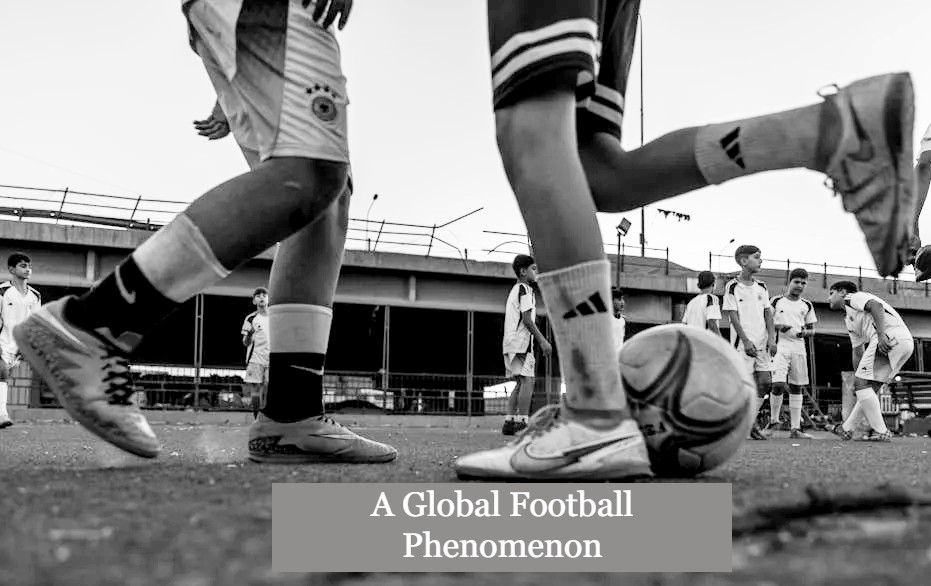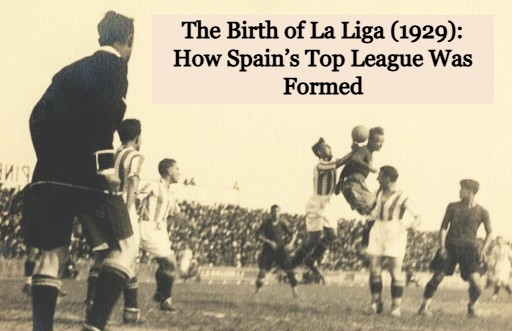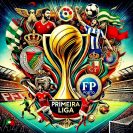
History: The Incredible Rise of La Liga
Founded in 1929, La Liga—now officially known as LALIGA EA SPORTS—has evolved from a domestic Spanish tournament into one of the most prestigious football leagues in the world. Ranked alongside Europe’s top leagues like the Premier League, Bundesliga, Serie A, and Ligue 1, La Liga attracts millions of fans worldwide. Known for its iconic clubs, legendary players, and historic moments, it remains one of the most competitive leagues in football history.
History: A Global Football Phenomenon

La Liga’s influence has extended far beyond Spain, transforming it into a global football powerhouse. Its rich tradition of excellence is embodied by clubs such as Real Madrid, FC Barcelona, Atlético Madrid, and Sevilla, all of which have helped shape the league’s identity. Renowned for high-stakes matches, star-studded squads, and passionate rivalries—especially El Clásico between Real Madrid and Barcelona—La Liga has secured its position as a cornerstone of European football.
History: Legendary Clubs and Iconic Players
Some of football’s greatest legends have graced La Liga, including:
- Lionel Messi (FC Barcelona) – The league’s historic leading goal-getter and a legendary figure in the game.
- Cristiano Ronaldo (Real Madrid) – A milestone-setting striker who revolutionized the Madrid-Barcelona competition.
- Alfredo Di Stéfano (Real Madrid) – A groundbreaker who commanded Madrid to countless continental victories.
- Johan Cruyff (Barcelona) – A game-changing athlete and manager who was crucial in building the famed “tiki-taka” philosophy.
Beyond individual brilliance, La Liga has been defined by the legacies of its clubs. From Real Madrid’s European dominance to Barcelona’s golden era under Pep Guardiola, these historic periods have left an indelible mark on world football.
History: Why La Liga’s Rise is Fascinating
La Liga’s transformation from a regional league to an international giant is a testament to its resilience and growth. Overcoming challenges such as the Spanish Civil War, economic struggles, and growing competition from other leagues, La Liga has remained a leader in global football. Tactical innovations, international branding, and advancements in technology—such as VAR and data-driven performance metrics—have only enhanced its reputation.
Today, La Liga continues to attract world-class talent, set new viewership records, and expand its global footprint. With its deep history, top-tier football, and fierce rivalries, La Liga remains one of the sport’s most captivating competitions.
History: The Birth of La Liga (1929): How Spain’s Top League Was Formed

In 1929, La Liga was officially founded to unite Spain’s top football clubs under a single, structured competition. Before its creation, teams primarily competed in regional leagues and the Copa del Rey, which was considered the country’s premier tournament at the time. As football gained widespread popularity, the need for a more organized league became evident.
History: How and Why La Liga Was Formed
In 1928, José María Acha, a director at Arenas Club de Getxo, proposed forming a national league inspired by England’s Football League (founded in 1888). His vision was to create a structured competition for Spain’s best clubs.
The Royal Spanish Football Federation (RFEF) debated several issues:
- Team Selection: Which clubs should be part of the league?
- Entry Criteria: Should the league be open to all or limited to the most successful clubs?
Ultimately, the inaugural season featured 10 teams, chosen based on their performance in the Copa del Rey. feature 10 teams, selected based on their previous success in the Copa del Rey, which had served as Spain’s primary national competition up to that point.
History: Key Figures Behind the Creation of La Liga
The formation of La Liga was driven by the contributions of several influential individuals, including:
- José María Acha (Arenas Club de Getxo) – The mastermind behind the league’s concept.
- Pedro Díez (President of the RFEF) – Assisted in shaping the league’s official structure.
- Representatives from top clubs such as Real Madrid, Barcelona, Athletic Bilbao, and Real Sociedad, who played a key role in defining the competition’s regulations.
Through their collaborative efforts, La Liga was officially inaugurated on February 10, 1929.
History: The Birth of La Liga: 1929
The first-ever La Liga season in 1929 was a defining moment in Spanish football history.
History: The 10 Pioneering Teams
The original La Liga clubs were selected based on their prior accomplishments in Spanish football:
- FC Barcelona
- Real Madrid
- Athletic Club (Bilbao)
- Real Sociedad
- Atlético Madrid
- Espanyol
- CE Europa
- Racing Santander
- Real Unión
- Arenas Club de Getxo
League Structure
- Match Format: Each club played all other teams twice (home and away).
- Scoring System: 2 points per win, 1 for a draw, and 0 for a loss (the current 3-point rule was implemented in 1995).
- Relegation Rule: The team finishing last was demoted to the Segunda División.
History: Foundational progress and struggles (1930s-1950s)
The Spanish Civil War (1936-1939) had a deep influence on La Liga’s initial growth phase, creating major obstacles to the expansion of the league. Here are the notable consequences throughout the 1930s-1950s:
- Halt of league activities the war resulted in the halt of La Liga 1936 – 1939, stopping all formal matches. Numerous athletes, trainers and personnel were drafted, and multiple teams faced difficulties to sustain their functioning throughout the war.
- Athlete upheaval and casualties Many athletes escaped the nation, enlisted the armed forces, or were fatally lost throughout the war. Clubs deprived of key players, which hindered their after-conflict rebuilding and disturbed squad cohesion.
- Sociopolitical fragmentation and territorial disputes clubs were frequently linked with societal and cultural affiliations. For illustration, Barcelona, with its Catalonian heritage, and Athletic Bilbao, tied to Basque separatist movement, transformed into icons of defiance. Real Madrid, at the same time, was eventually viewed as embodying Francoist rule, which intensified sociopolitical friction and competitions.
- Financial challenges various clubs encountered extreme fiscal difficulties throughout and following the conflict, resulting in dissolution or restructuring. Financial volatility rendered it challenging to commit to talent cultivation, venue enhancements, or growth initiatives.
- After-conflict rebuilding in spite of the obstacles, the era following the war witnessed initiatives to restore the competition. Clubs like Real Madrid and Barcelona started their ascend their ascend to notoriety in the 1940s and 1950s, gaining global recognition. Athletic Bilbao additionally maintained its strong position as an initial dominant force.
The endurance demonstrated this era established the basis for the league’s eventual expansion. The intense competitions, especially among Real Madrid and Barcelona, were shaped by the socio-political and cultural divides of the time period, defining the league’s legacy and character for future generations.
History: Rebirth and Growth of La Liga After the War
In the aftermath the Spanish Civil War (1936-1939), La Liga experienced a major phase of rebuilding, surmounting initial obstacles to broaden and strengthen its standing in Spanish football.
- Restart and steadying of the league La Liga restarted in 1939 with a revitalized push to establish steadiness to the matches. Even with ongoing political and financial struggles, clubs aimed to reconstruct and revive soccer as a symbol of cohesion of the nation and patriotism.
- Initial team supremacy throughout the 1940s, Athletic Bilbao, Valencia, and Atlético Madrid rose as post-conflict giants, securing several championships. Real Madrid and Barcelona, although not quickly powerful, commenced to revamp their teams for long-term victory.
- Growth of teams toward the end 1940s and 1950s, La Liga increased to add additional squads, forming a more stronger tournament. This growth promoted local inclusion, providing more areas a involvement in the league’s advancement.
- Emergence of key feuds the post-conflict era saw the heightening of competitions, especially among Real Madrid and Barcelona, which would later defined to La Liga’s character. These feuds were driven by governmental, territorial, and societal friction.
- Global acknowledgment by the 1950s, La Liga’s increasing influence on the continental platform was clear. Clubs drew foreign athletes, and Real Madrid’s supremacy in the recently created continental tournament (clinching five straight championships from 1956 – 1960) aided boost the global standing of the league.
- Facility improvements clubs allocated resources in arena enlargements and upgrades throughout this period, representing their aspiration to expand and update. Barcelona’s Camp Nou, opened in 1957, transformed into a milestone of the league’s advancement.
In Summary the post-conflict revival of La Liga signified a pivotal moment in its initial development. The competition surmounted political and financial difficulties, broadened its contests, and established the basis for evolving into one of Europe’s and the world’s top soccer divisions.
Initial Supremacy of Teams Such as Athletic Bilbao, Real Madrid, and Barcelona (1930s to 1950s)
Throughout La Liga’s foundational period and post-conflict rebuilding era, clubs like Athletic Bilbao, Real Madrid, and Barcelona rose as leading powers, defining the competition’s initial character in the face of various obstacles.
- Athletic Bilbao’s Initial Achievements – athletic Bilbao was a dominant team in La Liga’s beginning stages, securing four championships in the 1930s and regularly contending for the league leadership. Their achievements was founded on homegrown players, focusing on their strategy of exclusively using Basque players, a custom that persists to this day. They also captured numerous Copa del Rey trophies, cementing their renown as among Spain’s top teams.
- Real Madrid’s Recovery After the War – although Real Madrid did not lead in the1930s, the club commenced to ascend to influence in the late 1940s. During the early 1950s, they positioned themselves as as strong competitor led by Club leader Santiago Bernabéu, who allocated significant resources in athlete development and facility improvements such as the building of the Santiago Bernabéu arena in 1947. Real Madrid supremacy became evident more clear with the acquisition of Alfredo Di Stéfano in 1953, who resulted in the club to their initial championship in a long time and paved the way for their Continental dominance.
- Barcelona’s Comeback – Barcelona achieved victories in the 1920s and 1930s, securing La Liga’s inaugural season in 1929 and gaining another championship in 1945. They were one of the initial teams to embrace professional soccer methods, establishing the foundation for long term-victories. The 1950s witnessed the introduction of László Kubala, one of Barcelona’s most legendary athletes, who drove the team forward to numerous championships and raised its status in La Liga.
- Obstacles and Competitions – The Spanish Civil War interrupted the competition’s progress, but these clubs recovered swiftly in the after-conflict era. Intense competitions, especially among Real Madrid and Barcelona, started to take form throughout this time, fueled not by matchday battles but as well as local and governmental influences. Athletic Bilbao sustained its position as a contending power and primary opponent for both Madrid and Barcelona.
In conclusion, the early supremacy of Athletic Bilbao, Real Madrid, and Barcelona had a significant impact in molding the league’s competitive nature and renown. These clubs established the base for the competition’s eventual growth and prepared the groundwork for the intense feuds that continue to characterize it today.
The Age of Icons
The 1950s – 1980s signified a pivotal era for La Liga, defined by renowned athletes and famed teams that catapulted the league to worldwide acclaim.
- Alfredo Di Stéfano & Real Madrid’s Dominance (1950s–1960s) – Di Stéfano’s introduction in 1953 paved the way for Real Madrid to eight league championships and five successive continental titles (1956 to 1960), cementing the team’s national and global supremacy.
- Johan Cruyff & Barcelona’s Impact (1970s) – Cruyff’s 1973 introduction helped Barcelona win the 1974 La Liga title and molded the team’s future playing philosophy. His comeback as head coach in hte late 1980s implemented the “tiki-taka” philosophy that revolutionized contemporary Barcelona.
- Increasing fame and rivalry – during the 1960s and 1970s, La Liga drew in more foreign talent, enhancing its international reputation. Clubs like Atlético Madrid and Valencia turned into championship hopefuls, heightening rivalry.
This period firmly entrenched La Liga as one of Europe’s premier football leagues, with intense feuds, legendary stars, and Global acknowledgment fueling its ongoing expansion and reach.
The International Expansion of La Liga (1990s to 2000s)
The 1990s and 2000s were crucial in molding the league into a worldwide football giant. Throughout this period, the competition progressed from a robust national rivalry into an globally renowned entity, fueled by talent-packed rosters, groundbreaking media agreements, and iconic matchups.
The Emergence of the Galácticos (Real Madrid)
During the presidency of Florentino Pérez, Real Madrid implemented the Galácticos policy at the beginning of 2000s, acquiring elite global players to enhance performance and commercial appeal. Notable acquisitions featured:
- Luis Figo (2000) – His debatable transfer from Barcelona to Real Madrid represented the league’s increasing rivalry.
- Zinedine Zidane (2001) – The graceful French midfielder enhanced Real’s reputation as an global football force
- David Beckham (2003) – Beckham’s worldwide icon contributed to the growth of La Liga’s reach, especially in Asia.
The Galácticos initiative placed Real Madrid as one of the globally renowned athletic franchises in the world.
Barcelona’s Dream Team
Barcelona additionally contributed a pivotal part in league’s worldwide expansion, due to their Golden Generation of the early 1990s, headed by Johan Cruyff. With Cruyff strategic leadership, Barcelona formed a possession-based tactical approach control and swift ball movement, eventually recognized as “tiki-taka”. Notable figures such as Hristo Stoichkov, Ronald Koeman, and Pep Guardiola helped Barcelona securing their first European Cup Glory in 1992, raising the team’s global stature.
The tiki-taka philosophy established the foundations for Barcelona’s future superiority, particularly during Guardiola’s managerial reign from 2008-2012.
The Introduction of Global Media Deals
One of La Liga’s key revolutionary shifts in the 1990s was its financial commitment in Global television rights agreements. Alliances with international broadcasters broadened competition’s exposure to fresh markets in North America, Asia, and Africa. Starting in the 2000s, La Liga games aired across 180+ nations, securing status as a Europe’s premier sporting event.
This growth generated higher profits for La Liga’s clubs, allowing recruitment of elite players and strengthen the league’s place on the global standing.
The Messi vs. Ronaldo Rivalry
The competition featuring Lionel Messi (Barcelona) and Cristiano Ronaldo (Real Madrid) shaped an entire generation of La Liga and captured worldwide fascination to the league.
- Messi – considered football’s finest athletes, Messi shattered numerous milestones, as well as becoming the highest goal scorer in history. His vision, agility, and tactical intelligence raised performance to legendary heights.
- Ronaldo – The Portuguese icon displayed strength, accuracy, and relentless goal-scoring ability to Real Madrid. His entry in 2009 heightened rivalry with Messi, transforming each El Clásico into an international phenomenon.
Throughout their reign, Barcelona and Real Madrid conquered both local and international tournaments. The two player’s joint dominance resulted in:
- Numerous FIFA Best Players awards, Mess:7 throughout this period, and Ronaldo: 5
- La Liga’s championship battles enthralled global audiences.
- Boosted financial growth and global fan engagement for the league
The Messi-Ronaldo period is frequently recognized for elevating La Liga’s position as a premier football league, drawing in a massive worldwide fanbase and securing its legacy at the summit of the sport.
In conclusion, the worldwide of La Liga in the 1990s and 2000s established the groundwork for its modern prestige as a top-tier football competition globally . With the surge of the Galácticos, the dominance of Barcelona’s Iconic team, and legendary Messi-Ronaldo duels, La Liga transformed into an international giant, enthralling fans from all parts of the globe.
Modern-Day La Liga (2010s-present)
The 2010s marked a defining period for La Liga, characterized by remarkable financial growth, increased international visibility, and greater competitiveness within Spanish football.
Financial Growth and Expanding Viewership
La Liga saw an unprecedented rise in revenue during this era, thanks to highly profitable broadcasting deals, major sponsorship agreements, and global marketing initiatives. Technological advancements such as VAR and collaborations with top-tier brands further elevated the league’s credibility and entertainment value. As a result, La Liga cemented itself as one of the most-followed football leagues globally, drawing millions of fans from all corners of the world.
La Liga’s Global Expansion Strategy
To amplify its reach, La Liga established regional offices in key international markets, including Asia, North America, and the Middle East. These offices played a crucial role in expanding the league’s presence through promotional campaigns, exhibition matches, and localized content tailored for global audiences. This expansion strategy successfully positioned La Liga as a truly international football brand.
The Rise of Atlético Madrid and Competitive Balance
While Real Madrid and Barcelona maintained their dominance, Atlético Madrid emerged as a fierce competitor in the 2010s. Under the guidance of Diego Simeone, Atlético’s disciplined and tenacious style of play led to major triumphs:
- Winning La Liga titles in 2013–14 and 2020–21
- Reaching the UEFA Champions League final in 2014 and 2016
Atlético’s rise added a new dimension to La Liga’s competitiveness, breaking the long-standing duopoly of Spain’s two footballing giants. Additionally, the resurgence of clubs like Sevilla and Villarreal contributed to the league’s increasing unpredictability.
Conclusion
Today, La Liga stands as a global footballing powerhouse, driven by financial success, worldwide expansion, and enhanced competition. With its rich history, legendary players, and ever-growing influence, La Liga continues to thrive as one of the most exciting and prestigious leagues in world football.
Recommend:
https://en.wikipedia.org/wiki/La_Liga
https://simple.wikipedia.org/wiki/La_Liga
La Liga: Latest News, Match Highlights, Standings, Transfers & Injury Updates (February 2025)
